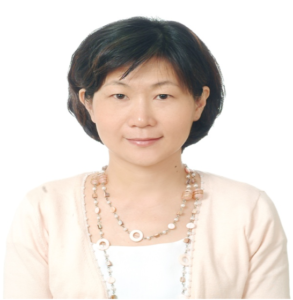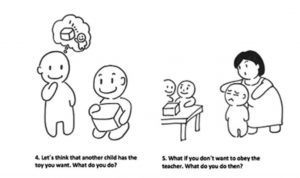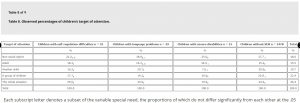 Professor Mei-Chun Lin is visiting University of Helsinki and Reunamo Education 31st July – August 7th. She is the Dean of College of Arts at the National University of Tainan in Taiwan. She is also the founding Chair and professor in the Department of Drama Creation and Application at the National University of Tainan. This is the first department in Asia focusing on the development of research and practice of drama education and applied drama. Pr. Lin is now the president of the Taiwan Drama Education Association (TADEA) and the chief editor of Journal of Drama Education and Performing Arts. We hope to be working together, especially in Aesthetics Education for preschool.
Professor Mei-Chun Lin is visiting University of Helsinki and Reunamo Education 31st July – August 7th. She is the Dean of College of Arts at the National University of Tainan in Taiwan. She is also the founding Chair and professor in the Department of Drama Creation and Application at the National University of Tainan. This is the first department in Asia focusing on the development of research and practice of drama education and applied drama. Pr. Lin is now the president of the Taiwan Drama Education Association (TADEA) and the chief editor of Journal of Drama Education and Performing Arts. We hope to be working together, especially in Aesthetics Education for preschool.
Author Archives: reunamo
Participation & special needs
Tiina Kuutti et al. paper Participation, involvement and peer relationships in children with special educational needs in early childhood education was in the list of the Top 10 papers downloaded from EJSNE last year. The article can be retrieved at https://www.tandfonline.com/doi/full/10.1080/08856257.2021.1920214
Many congratulations!
One of the key findings is that children with special needs is a very versatile group of children with very varied skills, needs and practices for participation (click the Table for a larger picture).
Supporting physical activity in early education.
Anna-Liisa Kyhälä defended her thesis on 14, 2023 with the topic “Children’s physical activity and early childhood opportunities in its promotion”. The dissertation looked at the overall picture of children’s physical activity based on weekly accelerometer measurements and explored physical activity in different children’s activities in early childhood education, which gives perspective to the selection of priorities. In addition, the factors of the learning environment were connected to physical activity. The results based on observation and evaluation of the learning environment indicated that children’s physical activity during the early childhood education day can be increased through pedagogical choices, planning, and consideration of children’s social needs. Children’s physical activity can be influenced! Unfortunately, the thesis is in Finnish, but luckily the articles are in English, see http://urn.fi/URN:ISBN:978-951-51-9004-8
Supporting social-emotional development in early childhood education
 Progressive Feedback organization, network, and methods have been participating in the Business Finland project CREDU (https://creduprojekti.wordpress.com/en/). One part of the project was to study the effects of interventions SAGA and Pikkuli, designed to support children’s emotional and verbal development. Children in the SAGA intervention advanced significantly in prosocial behavior and social orientation and had fewer internalizing and externalizing problems after the intervention. Children in the Pikkuli intervention advanced in prosocial
Progressive Feedback organization, network, and methods have been participating in the Business Finland project CREDU (https://creduprojekti.wordpress.com/en/). One part of the project was to study the effects of interventions SAGA and Pikkuli, designed to support children’s emotional and verbal development. Children in the SAGA intervention advanced significantly in prosocial behavior and social orientation and had fewer internalizing and externalizing problems after the intervention. Children in the Pikkuli intervention advanced in prosocial
behavior and had fewer internalizing problems after the intervention. There were no significant changes in any of the aforementioned outcomes in the control group. The results suggest that both interventions have good potential in supporting children’s social-emotional development in the ECEC environment. SAGA- www-pages in Finnish at https://www.helsinki.fi/fi/projektit/lasten-sosiaalisen-ja-emotionaalisen-kehityksen-tukeminen-varhaiskasvatuksessa. Pikkuli www-pages at https://www.pikkuli.fi/en/index/.
 Martikainen, S., Kalland, M., Linnavalli, T., Kostilainen, K., Aittokoski, M., Reunamo, J., Vasileiou, Z. & Tervaniemi, M., (In press). Supporting social-emotional development in early childhood education and care – a randomized parallel group trial evaluating the impact of two different interventions.
Martikainen, S., Kalland, M., Linnavalli, T., Kostilainen, K., Aittokoski, M., Reunamo, J., Vasileiou, Z. & Tervaniemi, M., (In press). Supporting social-emotional development in early childhood education and care – a randomized parallel group trial evaluating the impact of two different interventions.
Scandinavian Journal of Educational Research.
Autistic children in Early Education
Research on the involvement of autistic children in daily activities in inclusive early childhood education is scarce. In Finland, all children, including autistic children, under the age of seven (before basic education) are entitled to participate in early childhood education and care. Children also attend compulsory, free-of-charge pre-primary education during the year before their basic education begins. Furthermore, attending early childhood education and care is not dependent whether a child requires day care because of their parents’ work. Autistic children attend early childhood education in inclusive day care centres. Thus, in this study, we examined the involvement of autistic children by focusing on the objects of their attention during daily activities in inclusive day care centres in Finland.
The data were collected between 2017 and 2020, during the research and development project Progressive Feedback, in which children were observed using systematic sampling. The study material consisted of observations of seven autistic children as part of a larger sample of children. The data were analysed using statistical methods.
The results indicated that, during their deepest involvement, autistic children expressed positive emotions regarding participation and collaborated with and directed their focus towards other children. Moreover, autistic children demonstrated the most intensive involvement during adult-supported play.
In our study, we also discovered that peer relationships seem to play a key role in promoting involvement and, thus, well-being and learning. Our findings demonstrated that autistic children were most involved in their activities when they were oriented towards several children or just one child at a time; indeed, they were even more involved in such activities than those in relation to adults, non-social objectives or the situation overall. This is an interesting finding, as previous studies have shown that autistic children (Chang et al. 2016), as well as those with SEN generally (Broomhead 2019), have fewer experiences of social interaction with neurotypical peers. Thus, this finding suggests, in alignment with earlier studies, that ECEC professionals must provide systematic support for the interaction and social skills of the individual child and the group as a whole (Broomhead 2019; Chang et al. 2016).
Syrjämäki, M., Reunamo, J., Pesonen, H., Pirttimaa, R. & Kontu, E. (in print). The involvement of children with autism in early childhood education. The involvement of children with autism in early childhood education. Read the article: https://www.tandfonline.com/doi/full/10.1080/08856257.2023.2179310
Professor Chen granted to study children’s reading processes
 Professor Hui-Hua Chen from the Taiwanese Dong Hwa University Department of Early Childhood Education has been granted to join our team in Finland July-November 2023. The Taiwan ministry of science and technology has given professor Chen a grant to study children’s processes of learning to read. The pedagogical choices connected with learning to read will also be explored. Finnish and Taiwanese practices will be compared based on a large random sample conducted in Taiwan and Finland.
Professor Hui-Hua Chen from the Taiwanese Dong Hwa University Department of Early Childhood Education has been granted to join our team in Finland July-November 2023. The Taiwan ministry of science and technology has given professor Chen a grant to study children’s processes of learning to read. The pedagogical choices connected with learning to read will also be explored. Finnish and Taiwanese practices will be compared based on a large random sample conducted in Taiwan and Finland.
We have observed children’s reading sessions when the adult reads for the children and when children read books themselves. We have thousands of random observations of children’s reading processes. A comparison between two cultures gives perspective to understand the learning process not just as a personal learning task, but also as a culturally mediated production of shared understanding.
We can change the world only if we see the opportunity!
 Teemu Nikkola researches the connections between children’s creativity and the everyday life, views and sociality of children’s early childhood education. According to Teemu’s article, children’s ability to see social situations (openness and influence) measured by interviews is related to creativity measured by an independent measure (Torrance). Creative children are more open and influential in their social roles. The tendency to develop situations in creative ways is interestingly reflected in new ways of developing social situations as well. Social creativity was particularly evident in children’s peer relationships, but with adults participation was lower.
Teemu Nikkola researches the connections between children’s creativity and the everyday life, views and sociality of children’s early childhood education. According to Teemu’s article, children’s ability to see social situations (openness and influence) measured by interviews is related to creativity measured by an independent measure (Torrance). Creative children are more open and influential in their social roles. The tendency to develop situations in creative ways is interestingly reflected in new ways of developing social situations as well. Social creativity was particularly evident in children’s peer relationships, but with adults participation was lower.  Thus, with adults, the child sees less opportunity for social creativity than with friends. This article has just been published for open access at https://www.tandfonline.com/doi/full/10.1080/03004430.2020.1813122. Check out Teemu’s interesting article. The future is open and we can only make a difference if we are able to see and describe real ways to change the world! The child needs the opportunity to practice his or her own social creativity as early as possible to strengthen his or her ability to participate in building our shared world.
Thus, with adults, the child sees less opportunity for social creativity than with friends. This article has just been published for open access at https://www.tandfonline.com/doi/full/10.1080/03004430.2020.1813122. Check out Teemu’s interesting article. The future is open and we can only make a difference if we are able to see and describe real ways to change the world! The child needs the opportunity to practice his or her own social creativity as early as possible to strengthen his or her ability to participate in building our shared world.
Social creativity

An article written by Teemu Nikkola et al. on the connections between creativity and sociality has just been published in the Journal of Early Childhood Research. the purpose of this article was to study children’s social orientations as creative processes in ECEC. We studied the connections between children’s creative thinking abilities and social orientations in interaction situations in ECEC. The results showed that participative orientation had a positive correlation with creative thinking abilities, which were fluency, originality, and imagination. Children’s social orientations inform us of the fruitful conditions for children’s participation in the building of the shared cultural content of ECEC. A participative orientation or changing and open way of acting in social interaction situations can be considered to predict children’s participation in this process. According to Amabile (1996), openness is a prerequisite for creativity. Engaging in the culture and contributing to its transformation are essential elements of both participation and creativity (Glăveanu, 2010). Children’s creative thinking abilities or divergent thinking can be considered to indicate their creative potential(Runco & Acar, 2012). Enhancing children’s creative potential enhances their creativity, but also enhances their possibilities to participate. However, creativity in interaction situations has not been self-evidently supported in ECEC. Teachers have considered the number of socially creative children to be relatively small (Chesnokova & Subbotsky; 2014). In addition, a participative orientation has also been shown to be rare in situations concerning teachers in ECEC (Nikkola et al., 2020).
There were also negative correlations with adaptive orientation and creative thinking abilities and with a withdrawn orientation and fluency. An adaptive and withdrawn orientation are both unchanging ways of acting. In comparison with participative orientation, these types are easier for teachers and more acceptable in ECEC in situations concerning teachers (Nikkola et al., 2020). However, openness to the situation can be considered to enable participation in the building of shared cultural content in ECEC. Within creativity learning can be viewed through its broader, multimodal, and dynamic goals for empowering children through participation, to support them in navigating and experiencing agency in the uncertain world (see OECD, 2018; Kangas etal. 2020). If children often use closed orientations, in other words, dominant and withdrawn orientations, they are in danger of not being creators of the shared content of ECEC culture. Furthermore, an unclear orientation tells us that children have difficulties connecting with the structure of ECEC culture and supporting their participation is essential.
According to Glăveanu (2010), culture can be defined as an accumulation of artifacts (norms, ideas, beliefs, material objects, etc.) that are ever-changing through the personal and collective acts of creativity. He states that creativity is the main engine behind cultural change and transformation. The OECD Education 2030 project states that transversal competencies should be at the center of education: creating new value, reconciling tensions and dilemmas, and taking responsibility (OECD, 2018). Of these, creativity is visible in the first one within the contexts of creativity as innovations and new solutions, as well as within the later ones, together with participation through the context of social relations and problem-solving skills. According to Kangas et al. (2020)to address these “Transformative Competencies” and to support children in being innovative, responsible, and aware, is to consider education through the notion that participation and playfulness is creative learning. In the ECEC setting, creativity can be seen to combine enthusiasm, co-operation, and challenging personal skills and competencies, but only when scaffolded through pedagogical participation by the personnel(Kangas & Harju-Luukkainen, 2021). Enhancing children’s creative thinking abilities, their creative potential, and participating in the building of the shared content of the ECECis essential for the future. Creativity is also an important part of learning and participation in ECEC. Especially play has been considered important for creativity and learning(Kangas et al., 2020). The perspective of creativity is strengthening its importance in the pedagogy of ECEC.
International open access webinar about ECEC research and practices (panel with Finnish researchers)
 In this video, Finland’s leading researchers on the field of early childhood education and care discuss broad themes, such as: – developing and understanding today’s teacher education programmes – developing pedagogical practices – critical reflection of the processes and future orientation The panelists are following: Professor Heidi Harju-Luukkainen Professor (Emerita) Eeva Hujala Docent, University Lecturer, Jyrki Reunamo Docent, University Lecturer Jonna Kangas University Lecturer Merja Koivula Postdoctoral Researcher Jenni Salminen Postdoctoral Researcher Samuli Ranta This international open access webinar is hosted by JECER (https://jecer.org/) and is posted by Early Childhood Education Association Finland (https://eceaf.org/).
In this video, Finland’s leading researchers on the field of early childhood education and care discuss broad themes, such as: – developing and understanding today’s teacher education programmes – developing pedagogical practices – critical reflection of the processes and future orientation The panelists are following: Professor Heidi Harju-Luukkainen Professor (Emerita) Eeva Hujala Docent, University Lecturer, Jyrki Reunamo Docent, University Lecturer Jonna Kangas University Lecturer Merja Koivula Postdoctoral Researcher Jenni Salminen Postdoctoral Researcher Samuli Ranta This international open access webinar is hosted by JECER (https://jecer.org/) and is posted by Early Childhood Education Association Finland (https://eceaf.org/).
The link to the video: https://youtu.be/tPO9gdhRkUQ
How can physical activity be measured in a valid and reliable way?
JOYPAM (PIILO in Finnish) is a research and development project on monitoring the joy of motion, physical activity and motor skills of young children, Piilo in Finnish. The project was implemented in 2019–2021 through multidisciplinary expert work. It was used to select and develop measurement methods based on population-level data collection, which were used to assess physical activity and motor skills of 4–6-year-old children and the factors related to movement. Progressive Feedback was one of the evaluated methods. Measuring physical activity is not an easy task and it is important to compare different methods and measures to increase reliability and validity. The report is available at https://www.likes.fi/wp-content/uploads/2021/09/Piilo_tulosraportti-1.pdf
